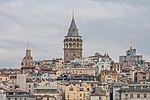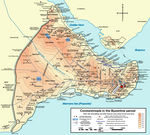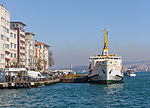Galata Bridge
1994 establishments in TurkeyBascule bridgesBeyoğluBridges completed in 1994Bridges in Istanbul ... and 5 more
FatihFormer toll bridges in TurkeyGolden HornOttoman bridges in TurkeyRoad bridges in Turkey

The Galata Bridge (Turkish: Galata Köprüsü, Turkish pronunciation: [ˈɡaɫata cœpɾyˈsy]) is a bridge that spans the Golden Horn in Istanbul, Turkey. From the end of the 19th century in particular, the bridge has featured in Turkish literature, theater, poetry and novels. The term "Galata Bridge" is actually a collective reference to a successive series of bridges linking Eminönü and Beyoğlu since the early 19th century. The current bridge, the fifth known by that name, was built in 1994. It was named after Galata, the former name of the modern quarter of Karaköy in the Beyoğlu district of Istanbul, located at the northern shore of the Golden Horn.
Excerpt from the Wikipedia article Galata Bridge (License: CC BY-SA 3.0, Authors, Images).Galata Bridge
Kemeraltı Caddesi,
Geographical coordinates (GPS) Address External links Nearby Places Show on map
Geographical coordinates (GPS)
| Latitude | Longitude |
|---|---|
| N 41.02 ° | E 28.973055555556 ° |
Address
Galata Köprüsü
Kemeraltı Caddesi
34425 (Kemankeş Karamustafa Paşa Mahallesi)
Türkiye
Open on Google Maps









